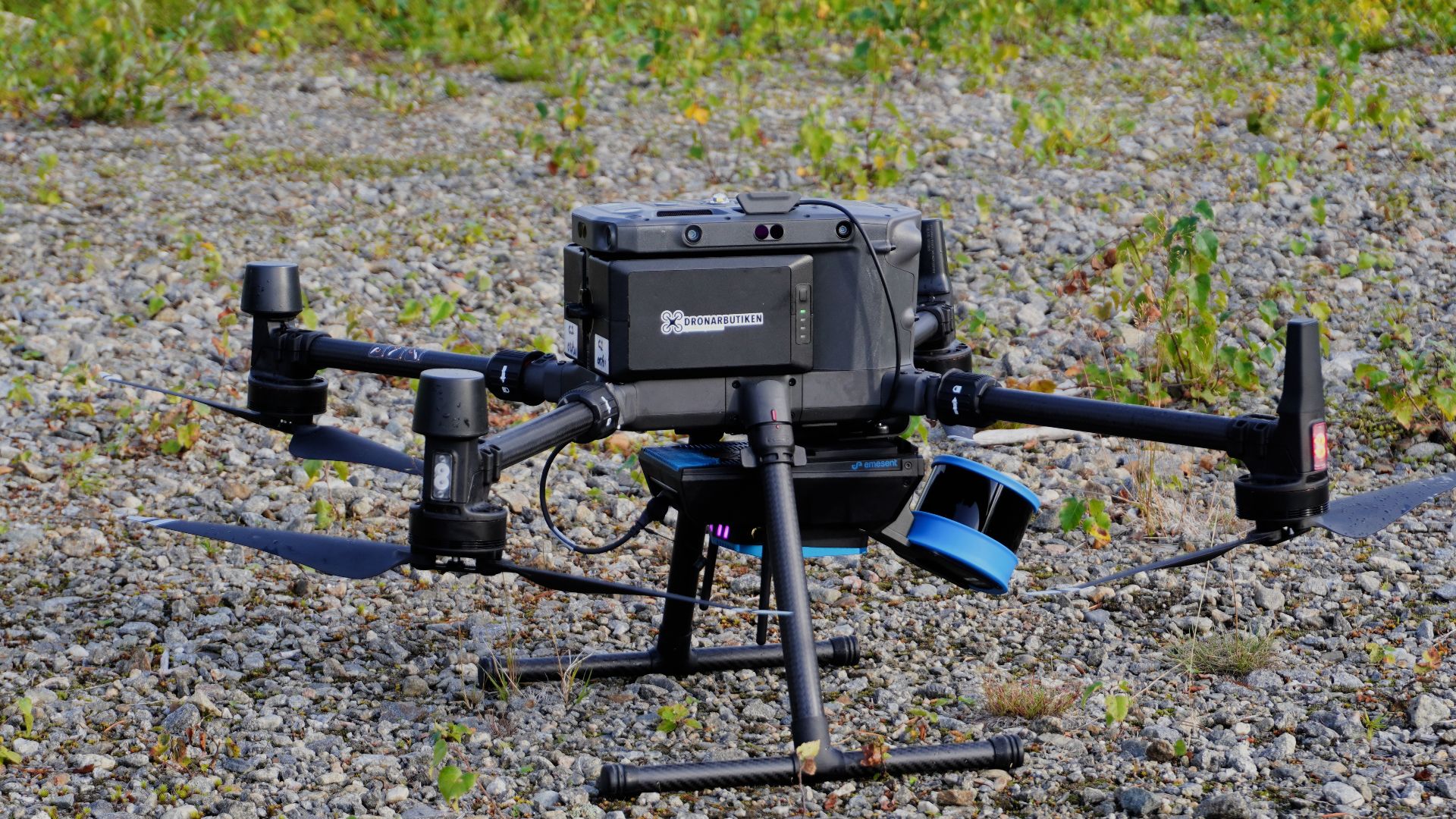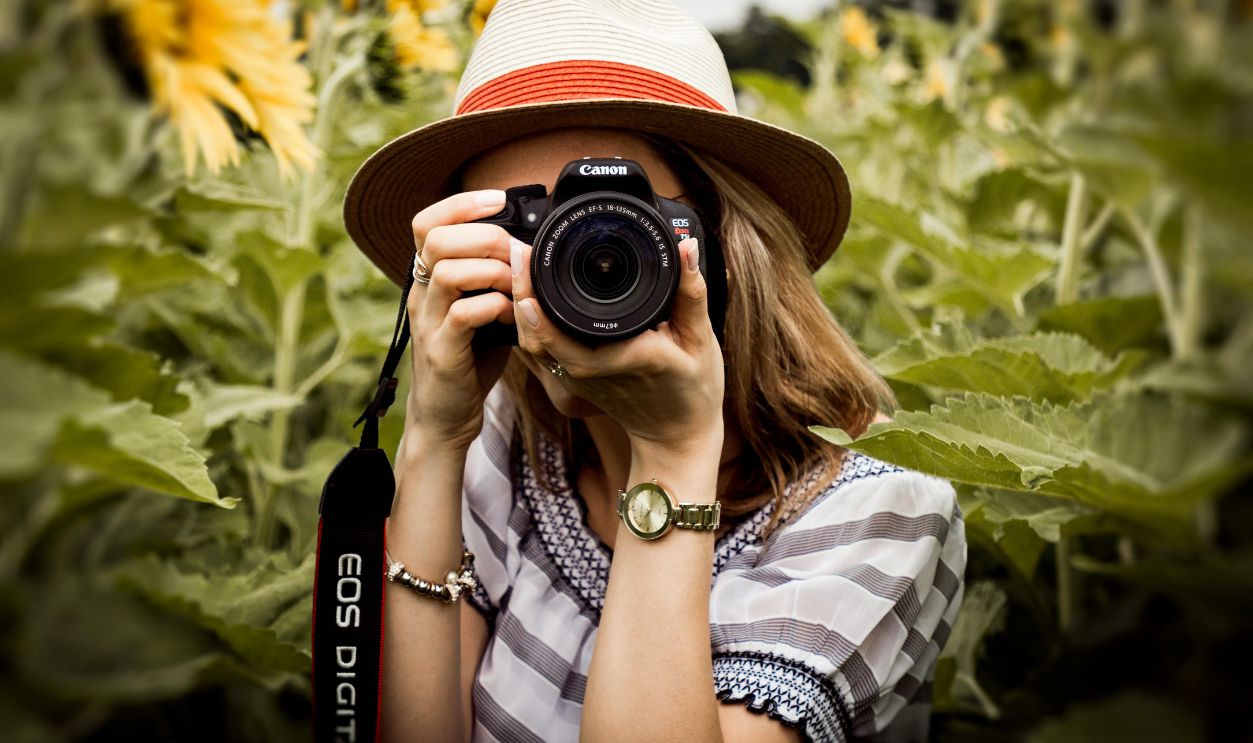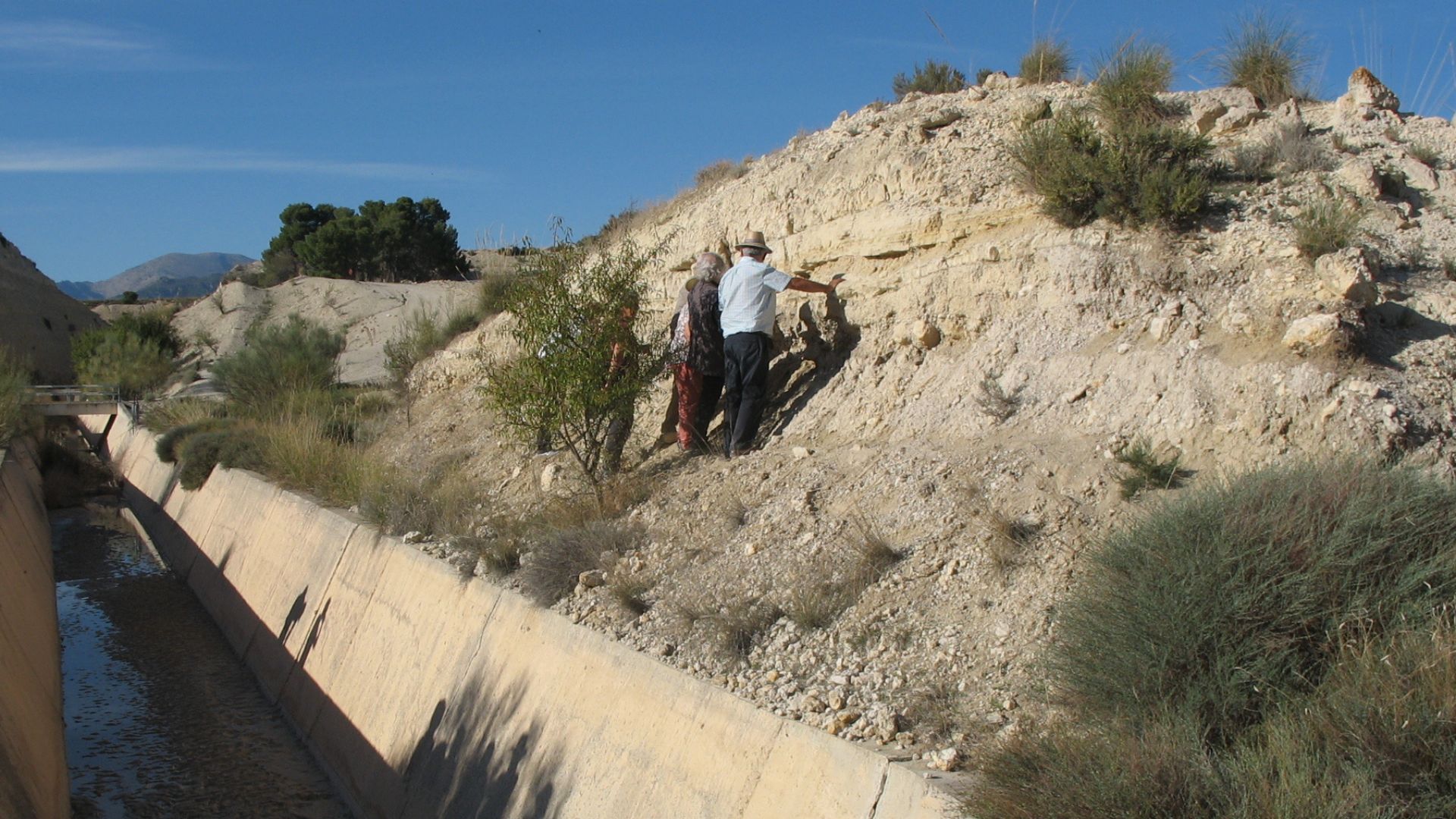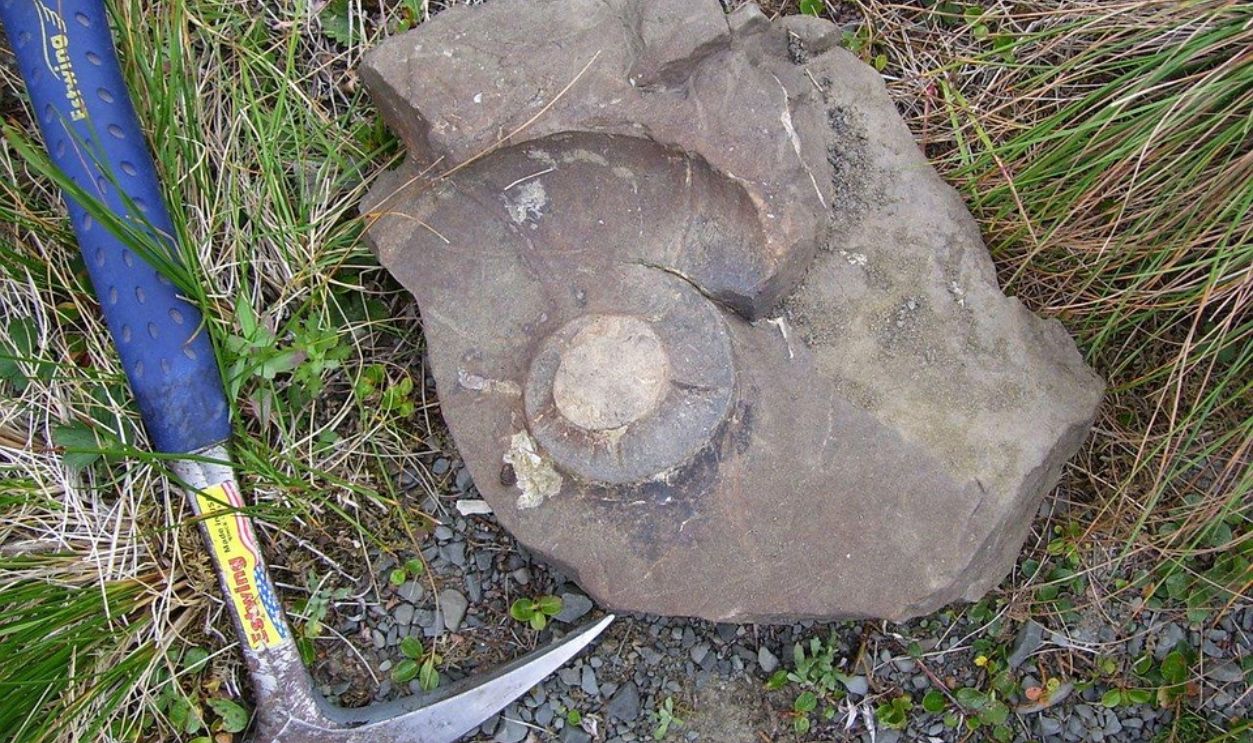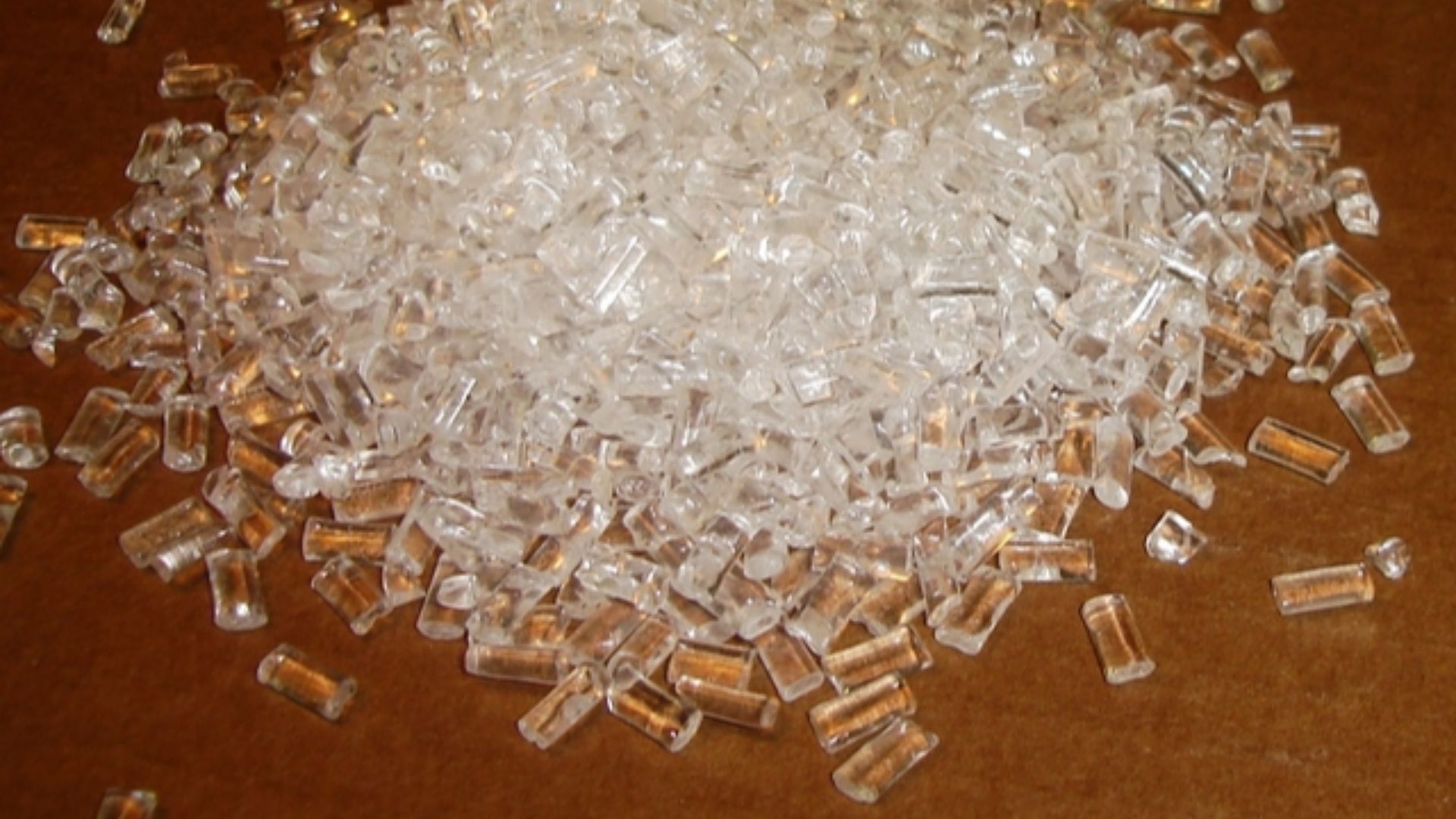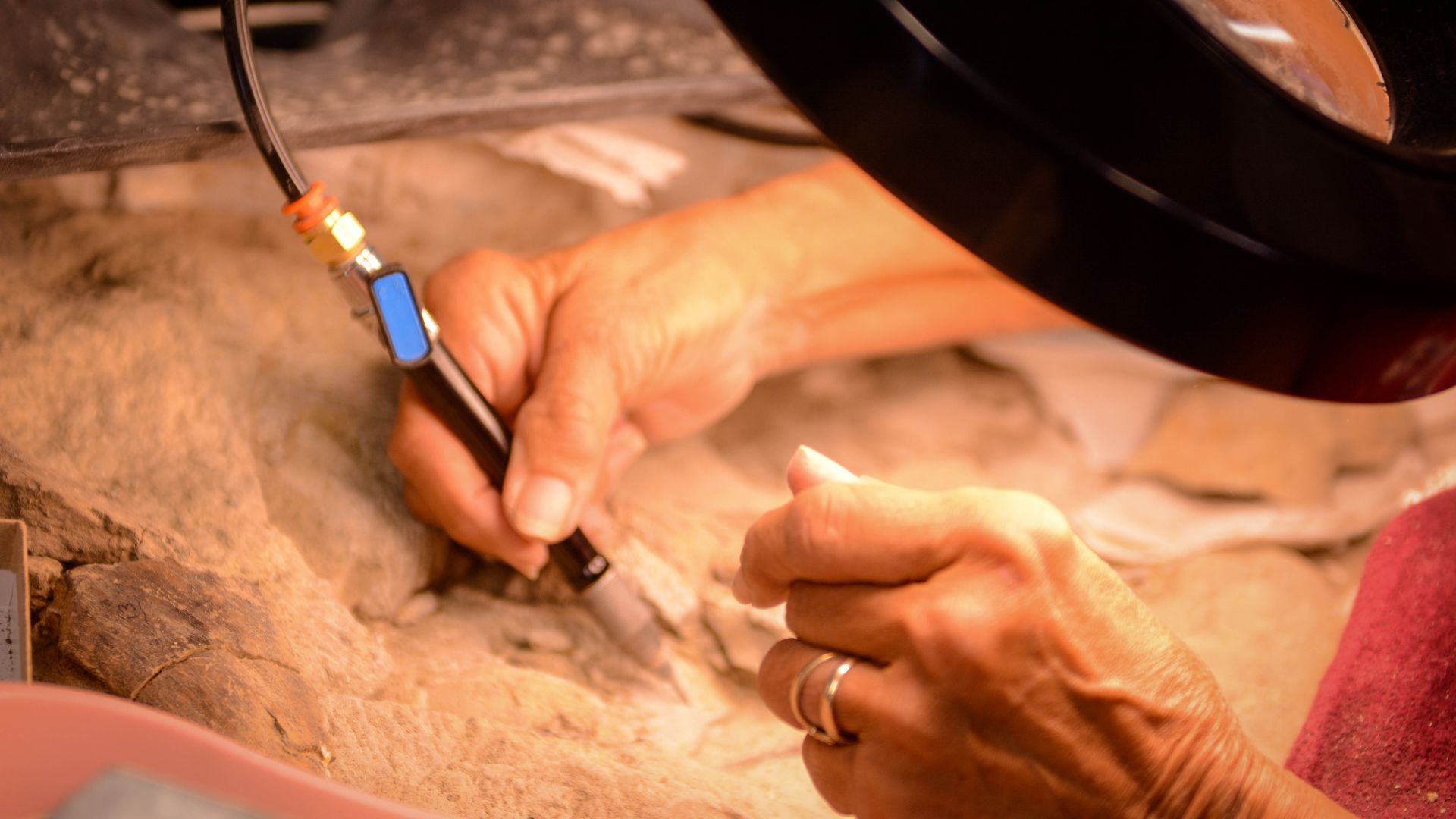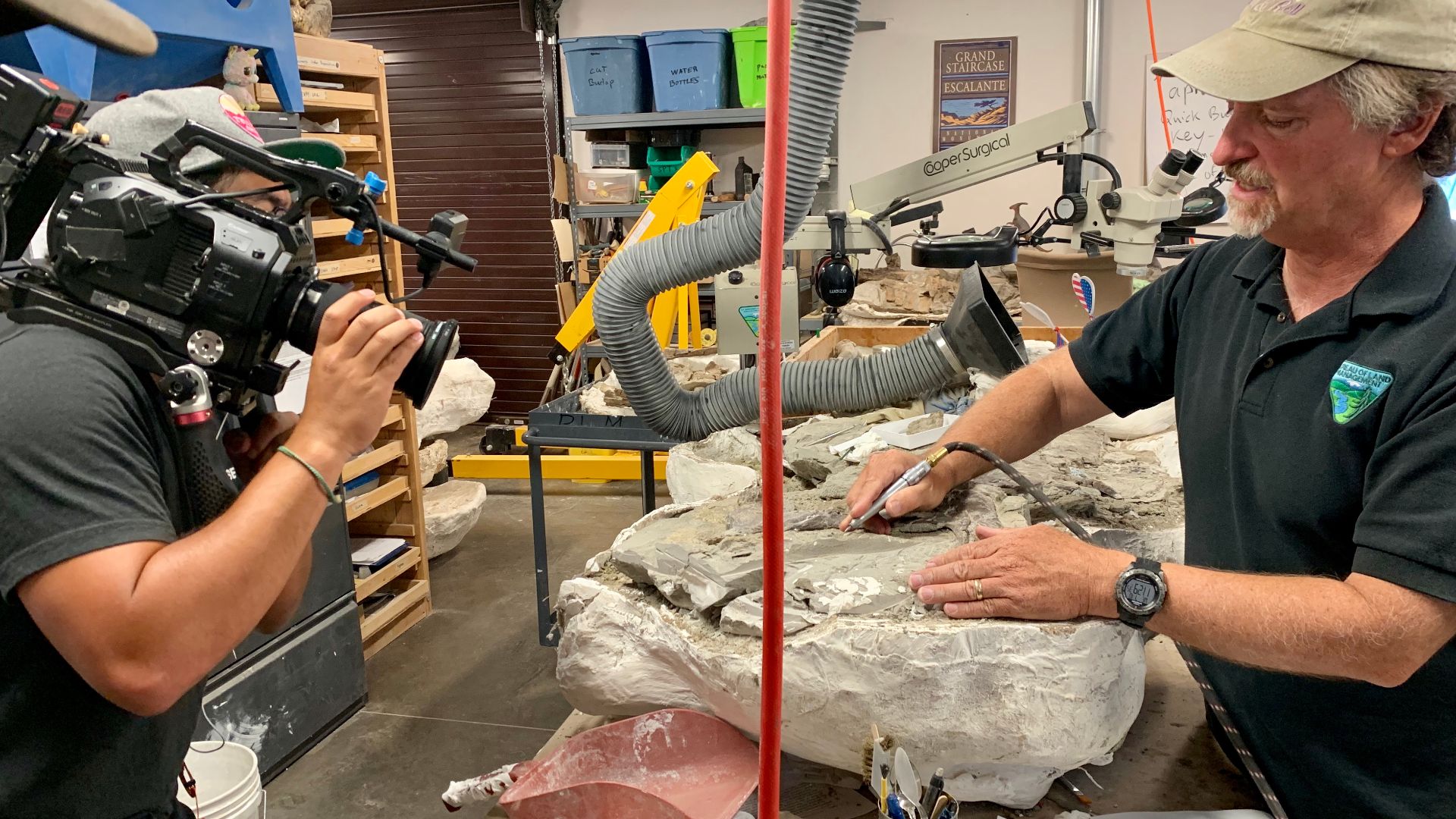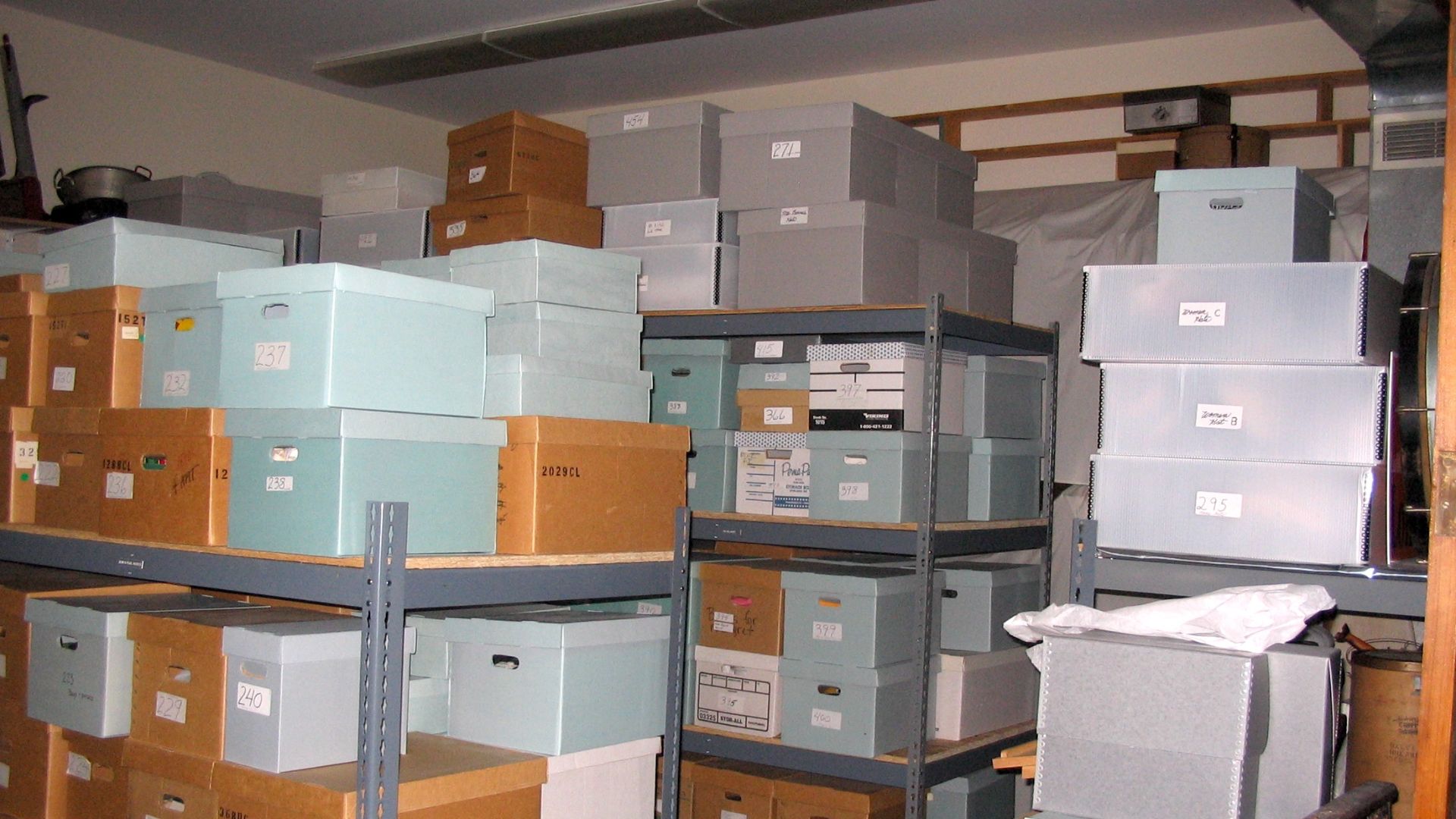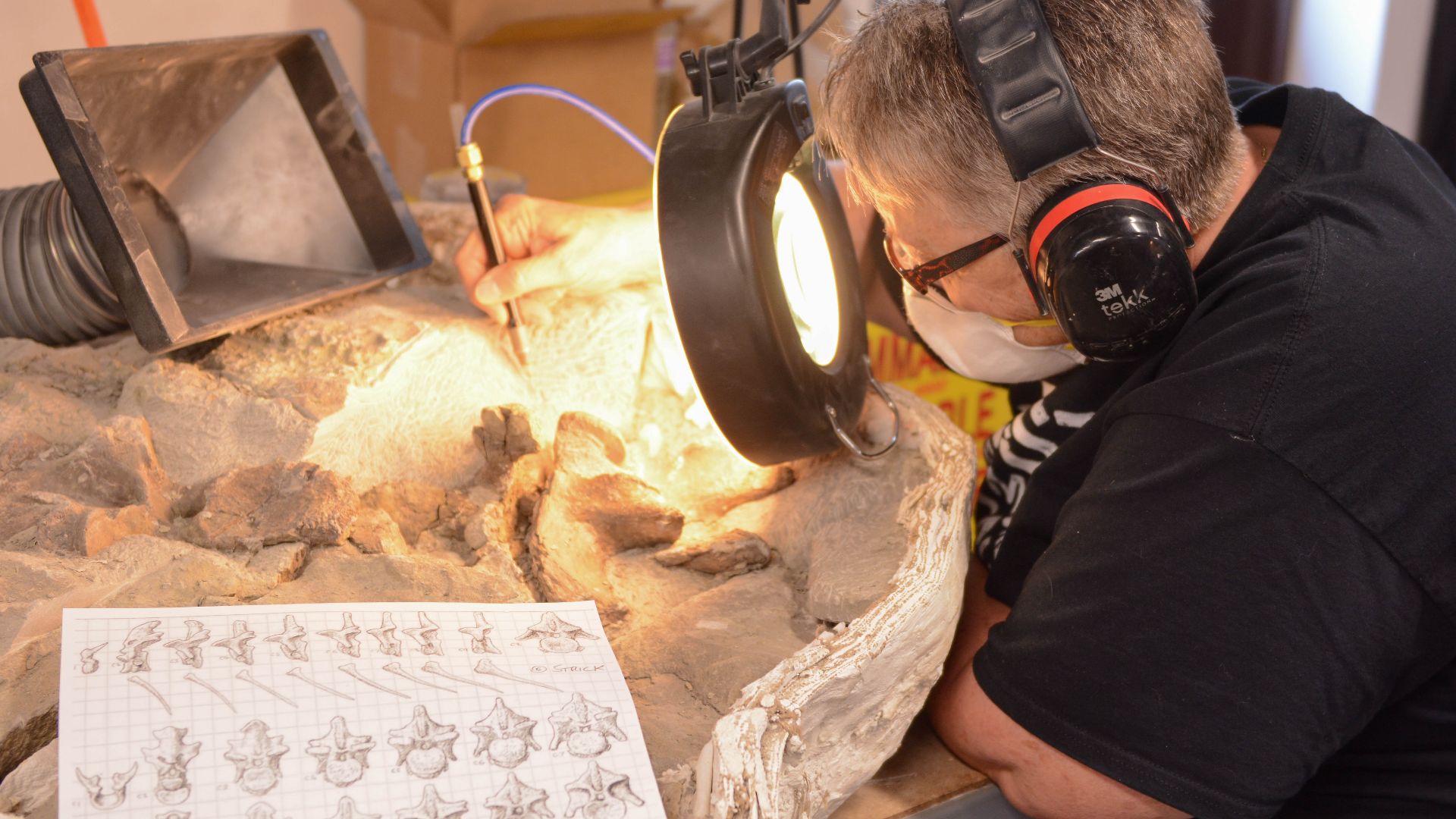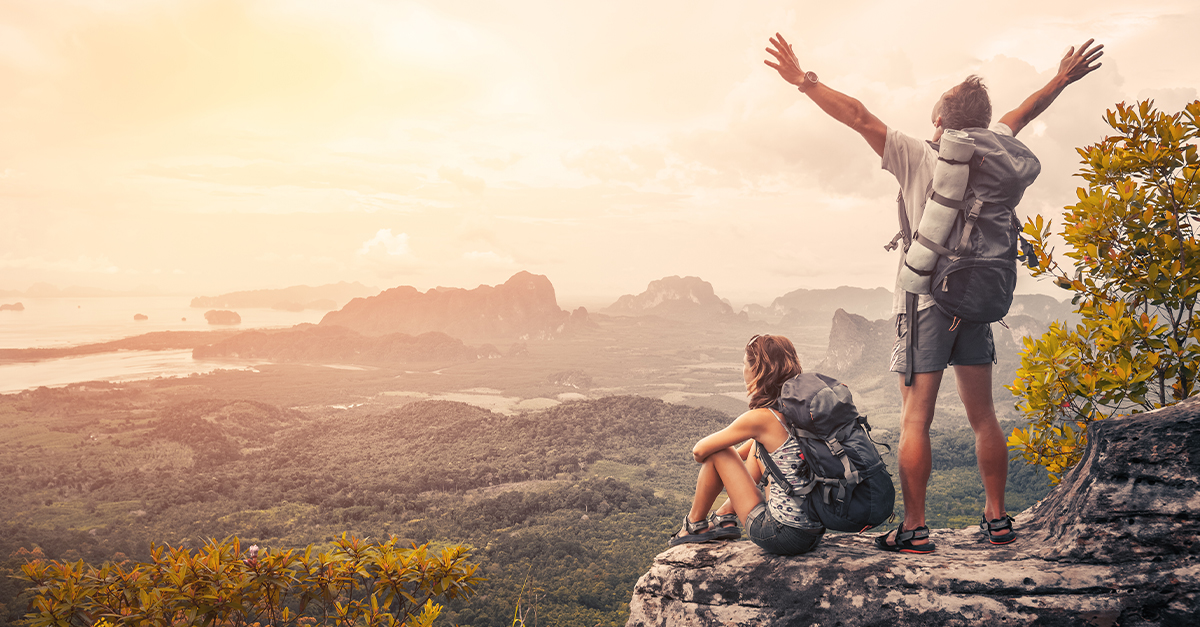Chasing The Past
Paleontology is a discipline of decoding clues left by creatures erased by time. It continuously reminds us that we are just a phase in the bigger story of this planet.
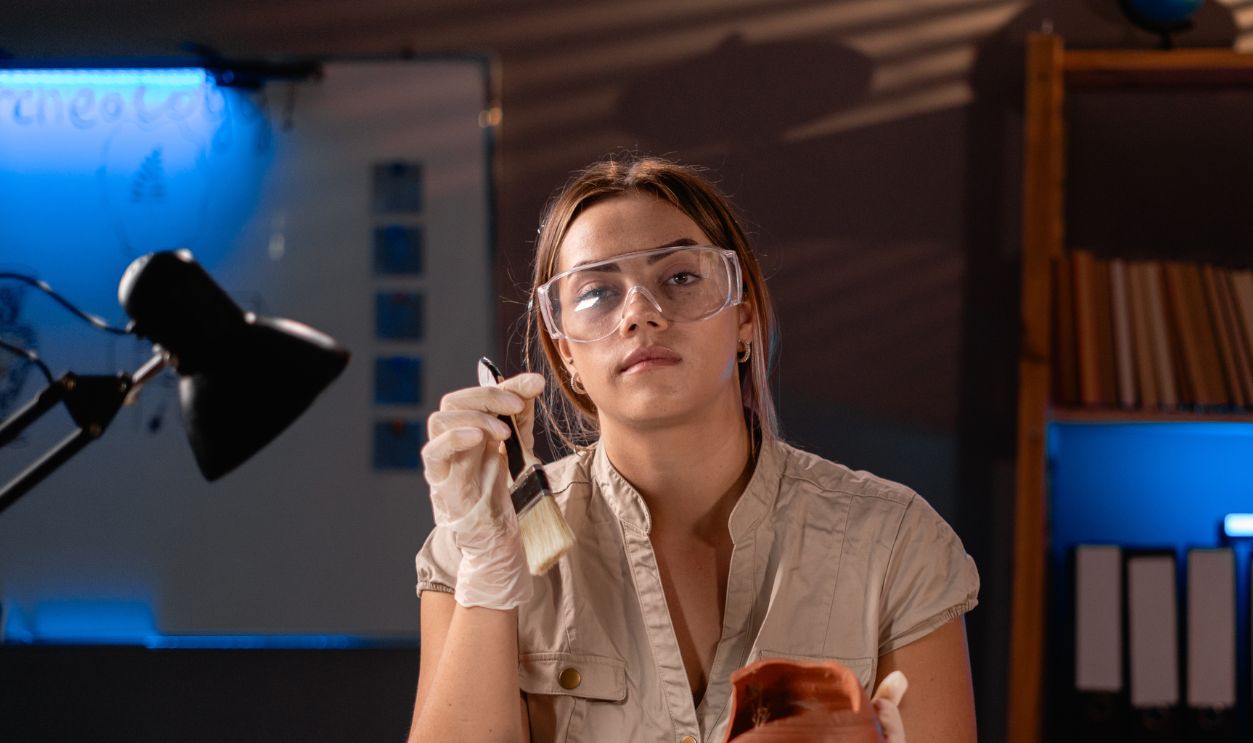
Reading Rocks And Time
The Earth doesn’t give up its secrets easily because dinosaur fossils are predominantly found in sedimentary rocks, formed when sand and clay settle over time. Scientists mainly focus on Mesozoic layers, which date back to 252 to 66 million years ago.
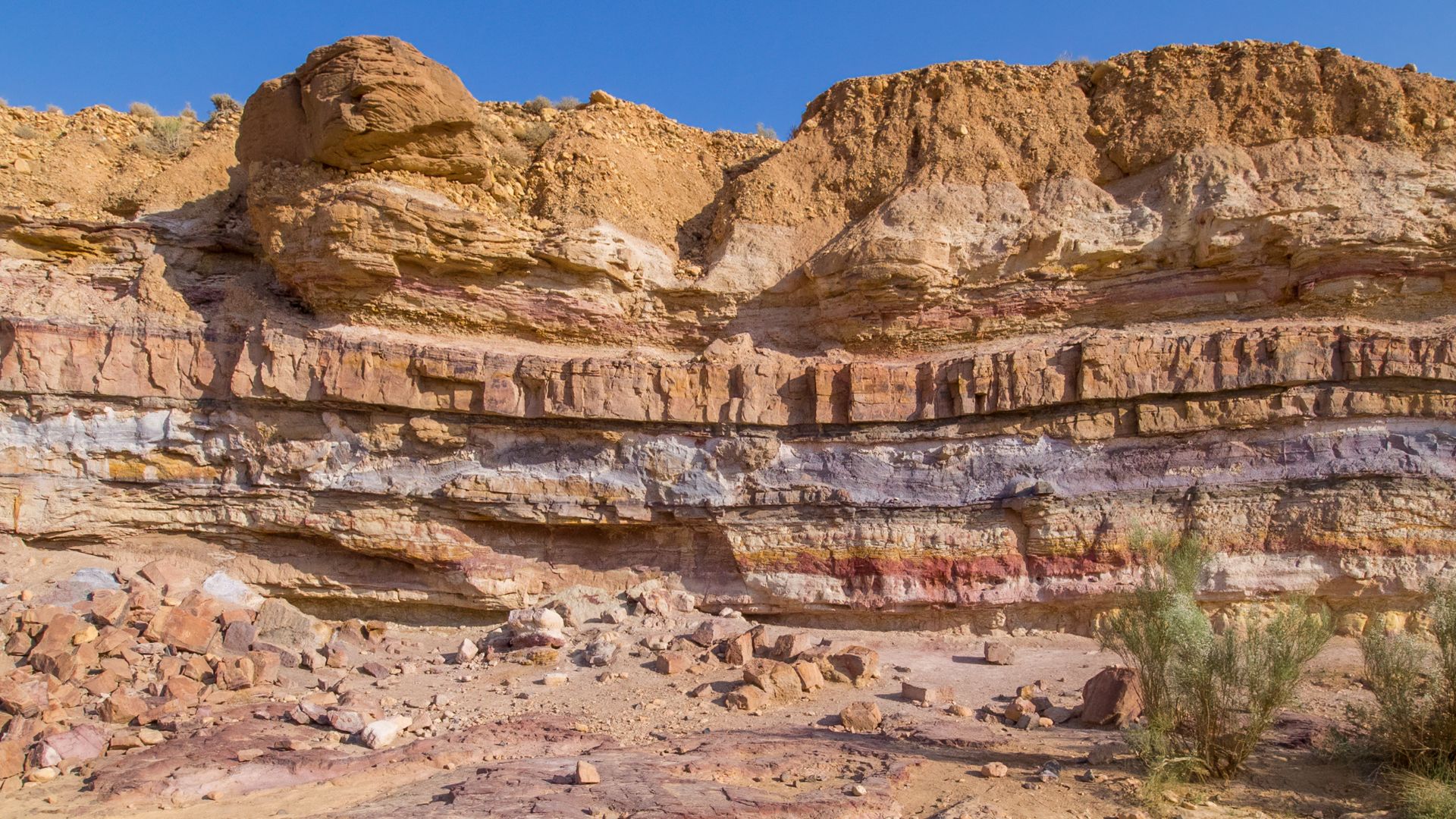 Rhododendrites, Wikimedia Commons
Rhododendrites, Wikimedia Commons
Understanding Stratigraphic Stacking
Radiometric methods, such as potassium-argon dating, allow scientists to determine the age of fossil-bearing layers with precision. Fossils appear in consistent bands, not haphazardly, so volcanic ash beds act as chronological anchors. These layers of rock, stacked over time, reveal a readable timeline where depth equates to age.
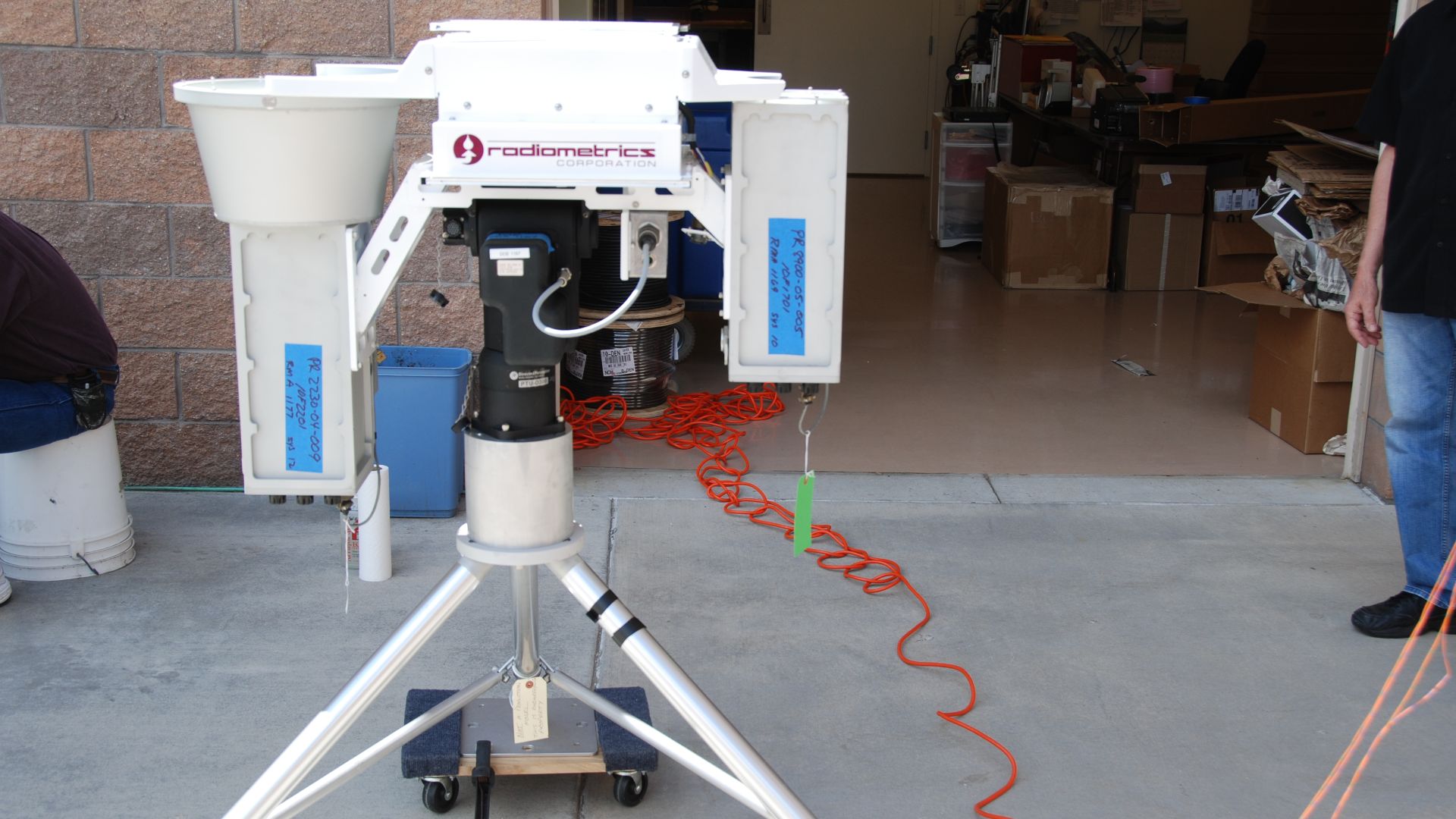 Let Ideas Compete, Wikimedia Commons
Let Ideas Compete, Wikimedia Commons
Choosing The Right Sedimentary Formation
Dinosaurs left clues in different ancient environments. A wide-bodied sauropod might rest in coarse sandstone, while delicate fossils often emerge from fine-grained mudstone or shale, where low-oxygen conditions slow decay. Each rock type indicates a distinct ecosystem and preservation potential.
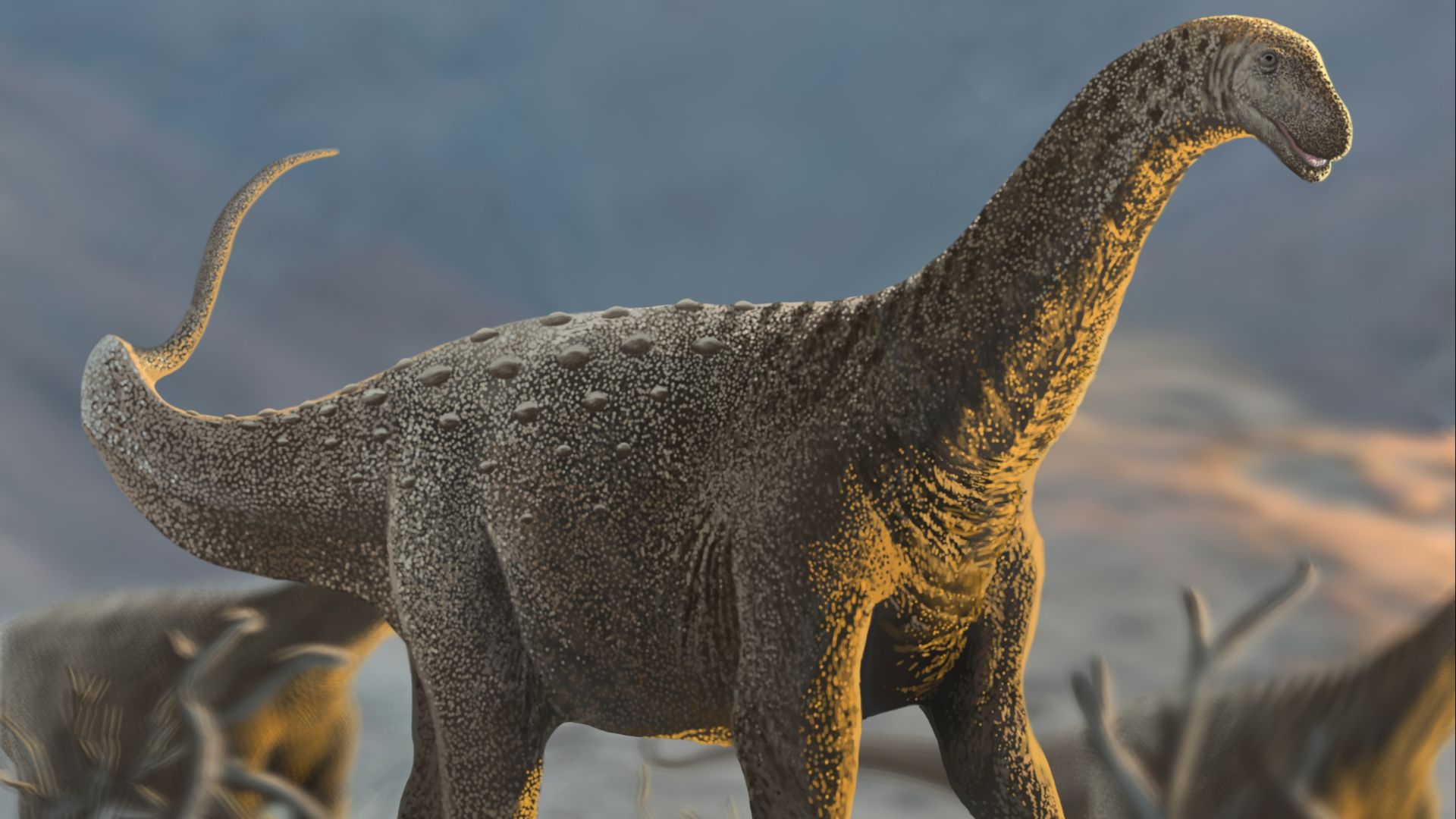 Thorfinn777, Wikimedia Commons
Thorfinn777, Wikimedia Commons
Using Geologic Maps And Satellite Imagery
Before setting foot on site, teams consult geologic maps to identify sedimentary layers of the right age. These are cross-checked with satellite imagery that highlights erosion lines and color shifts. Remote tools, such as LiDAR, also help locate likely fossil zones before digging begins.
Exploring Erosion Zones And Badlands
Sometimes, nature does the excavation first. In regions like Hell Creek, erosion exposes fresh fossil beds every season. Wind and freeze-thaw cycles erode layers of the earth. These dynamic badlands become hunting grounds, where even a shard of bone might lead to a buried giant.
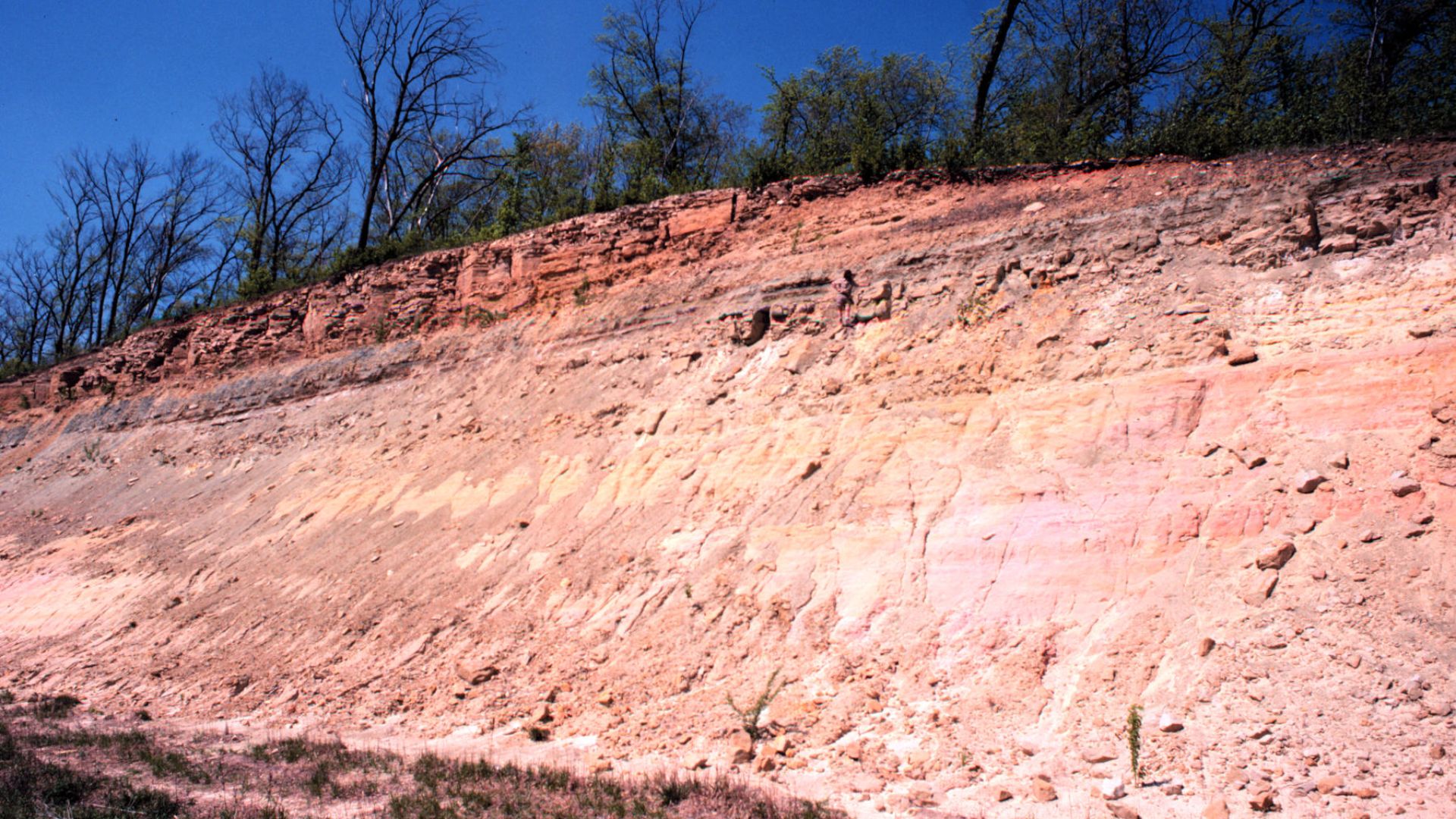 Joseph H. Hartman, Wikimedia Commons
Joseph H. Hartman, Wikimedia Commons
Ground Scouting For Fossil Fragments
A bone fragment the size of a thumbnail can spark an entire excavation. Paleontologists patrol dry creek beds and hillsides by scanning for unusual textures and shapes. Fossilized bone is denser and often darker than its surroundings, which hints at something ancient just beneath the surface.
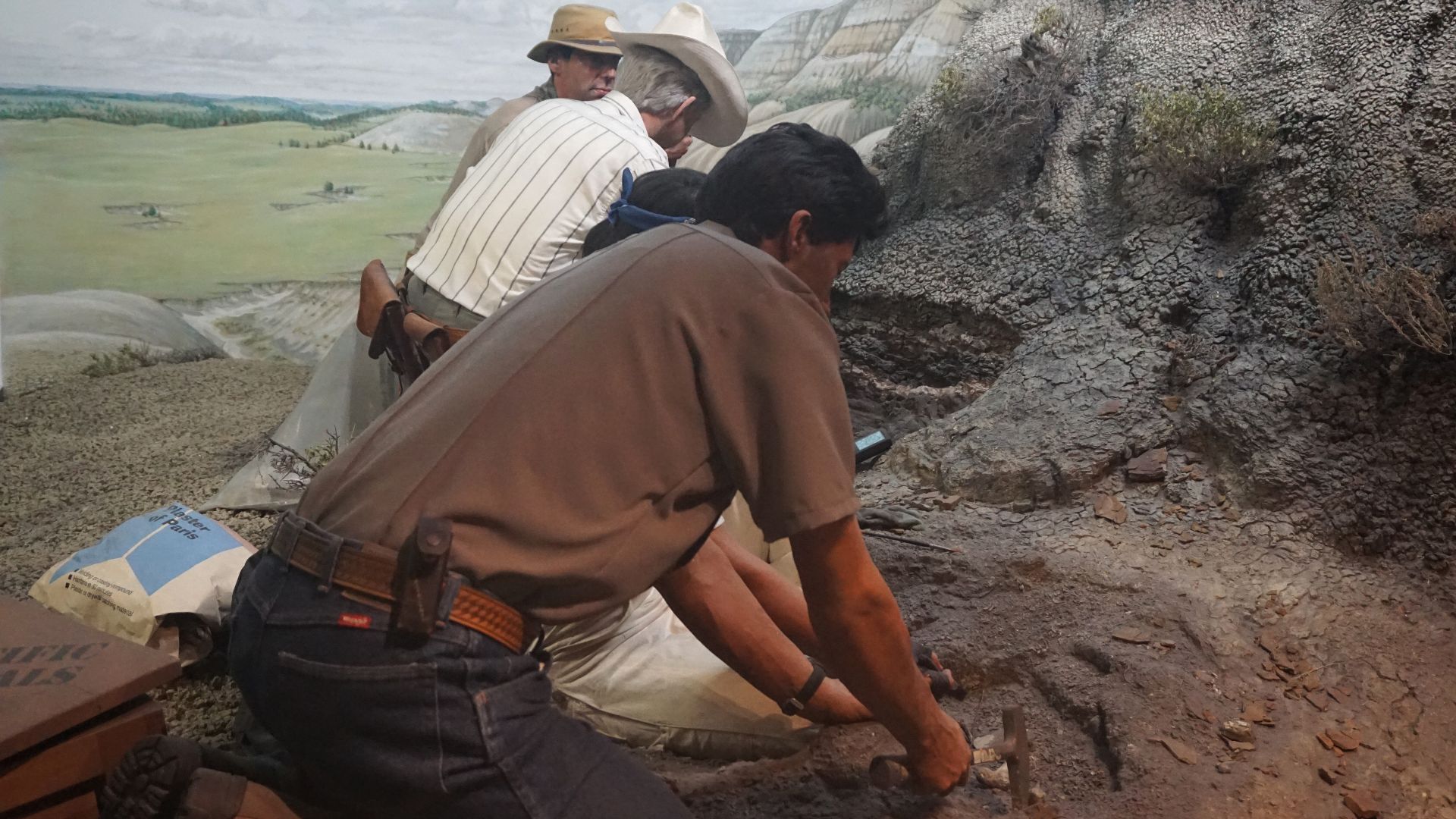 Michael Barera, Wikimedia Commons
Michael Barera, Wikimedia Commons
Verifying Fossil Identity In-Field
At first glance, petrified wood or ironstone can resemble bone. Scientists carry hand lenses and sometimes UV lights to examine pore structure or composition. Portable X-ray fluorescence devices are also used in some regions to detect fossil-specific minerals, which reduces the chance of excavating false positives.
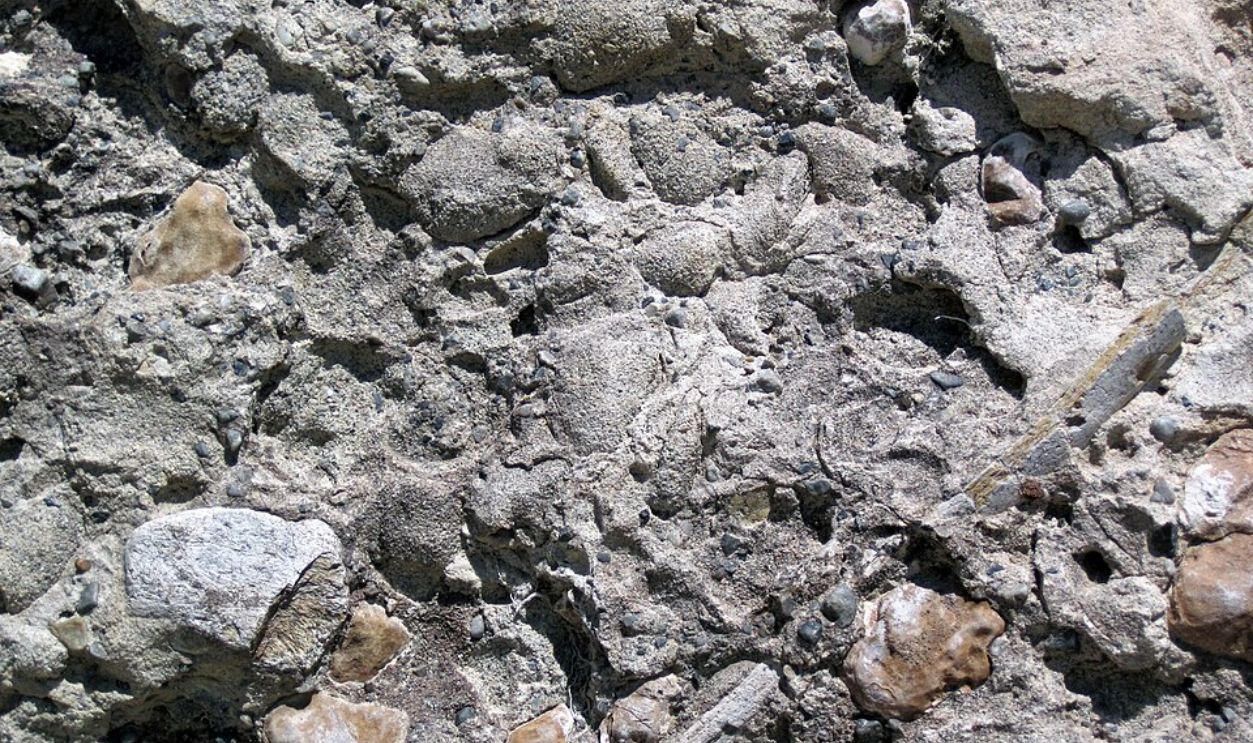 James St. John, Wikimedia Commons
James St. John, Wikimedia Commons
Starting A Test Pit
Once a fragment is identified, a narrow trench is dug to trace its path underground. These test pits reveal if the bone is isolated or part of a larger skeleton. Digging is a slow and deliberate process, often performed with dental tools and brushes to minimize damage to nearby materials.
 Wilson Hui from Calgary, Canada, Wikimedia Commons
Wilson Hui from Calgary, Canada, Wikimedia Commons
Documenting Fossil Position And Orientation
Every fossil tells more when its position is preserved. Scientists mark their compass direction and angle of burial, then build a square grid to map surrounding finds. This helps determine whether bones were scattered post-mortem by water or left mostly intact as the animal died.
Capturing Context Through Photography
A fossil's location is as important as the fossil itself. Before it's moved, the site is photographed with measuring tapes and orientation markers. High-resolution images serve as permanent records. Moreover, they support later interpretations and ensure that future researchers can analyze the findings in full context.
Mapping The Surrounding Sediments
Not all fossils are found in the same type of soil. Once exposed, the surrounding rock is examined for grain size and color transitions. These clues help determine if the site was once a river channel or a quiet lakebed back in the day.
Cleaning The Exposure With Precision Tools
Excavation follows a carefully controlled pace that prioritizes precision over speed. Technicians use fine brushes and wooden probes to uncover bone surfaces without causing fractures. Air scribes may be used when necessary, but only under close supervision, especially near delicate skulls or juvenile bones.
Consolidating Fragile Fossils On Site
Some fossils crumble at the touch. That’s why conservators apply a diluted solution of Paraloid B-72 or Butvar B-76 in acetone to reinforce porous bone. This hardens the fossil from within to allow further work without risking disintegration caused by temperature or mechanical stress.
Encasing With A Protective Field Jacket
To protect fossils during transport, scientists wrap them in plaster-soaked cloth. First, they lay down foil or wet paper to keep the plaster from sticking. Once the shell hardens, it forms a sturdy case that holds everything in place until it reaches the lab.
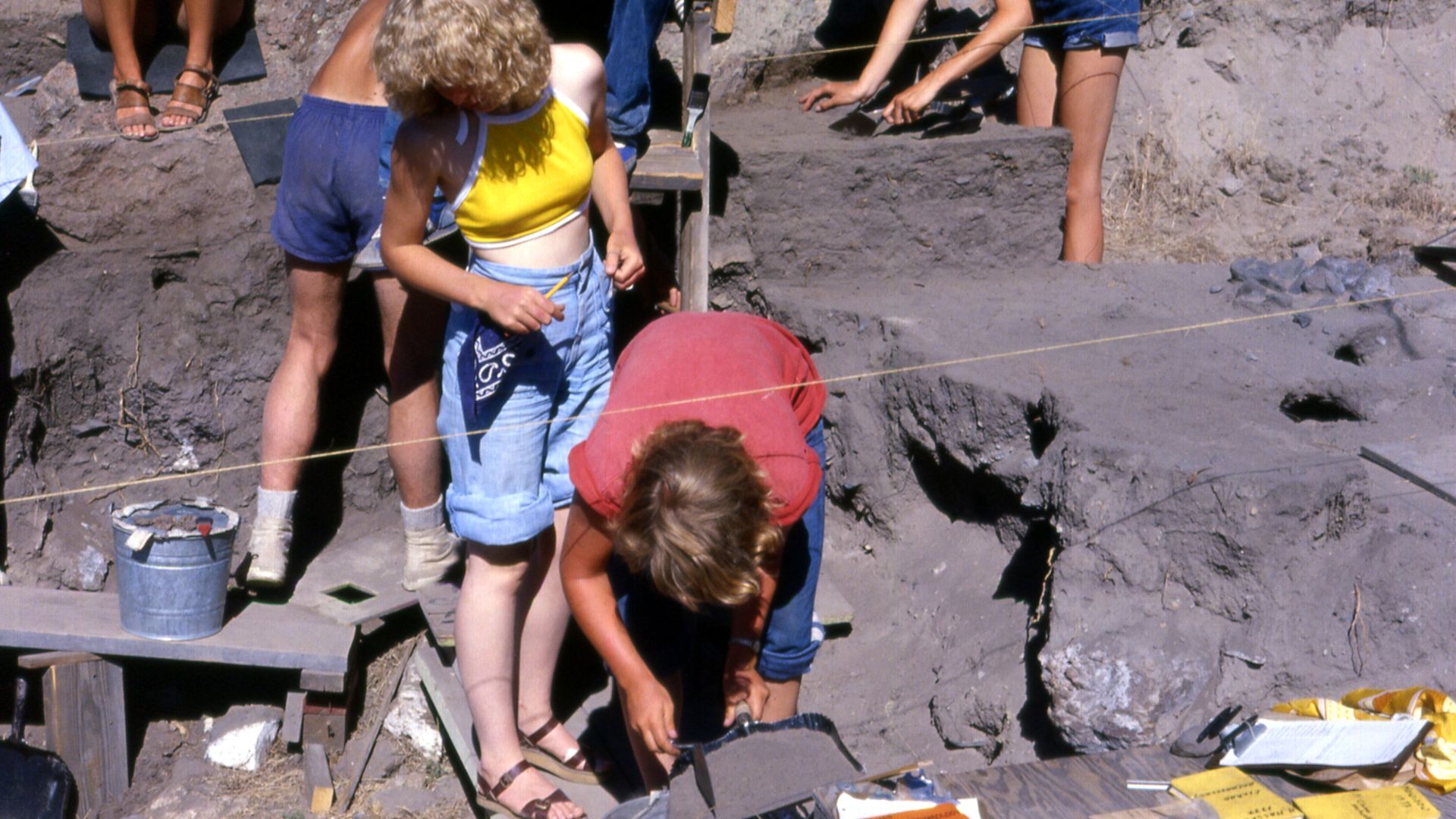 John Atherton, Wikimedia Commons
John Atherton, Wikimedia Commons
Removing The Fossil Block
Extracting the fossil block takes precision and strength. Crews dig beneath the plaster shell to form a pedestal. After undercutting, the block is gently flipped. The bottom is sealed with additional plaster, turning it into a secure, labeled package ready for lab transport.
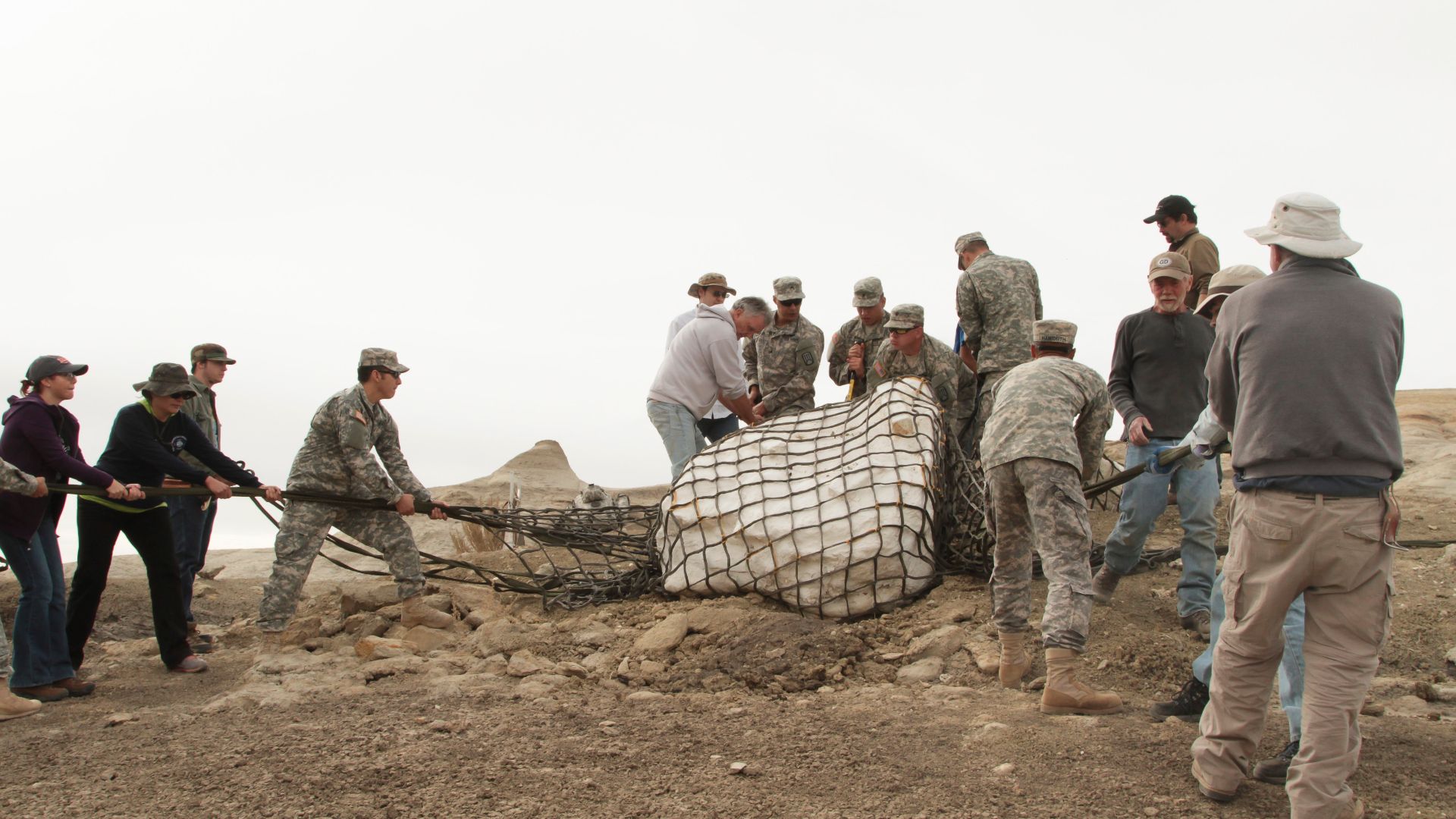 The National Guard, Wikimedia Commons
The National Guard, Wikimedia Commons
Transporting Fossils Safely
Jacketed fossils are first loaded onto pack animals or helicopters in remote areas. Once they reach roads, they're crated with foam for safety and marked with arrows to show orientation. Temperature and vibration control help preserve fragile bones, especially those that are still in position.
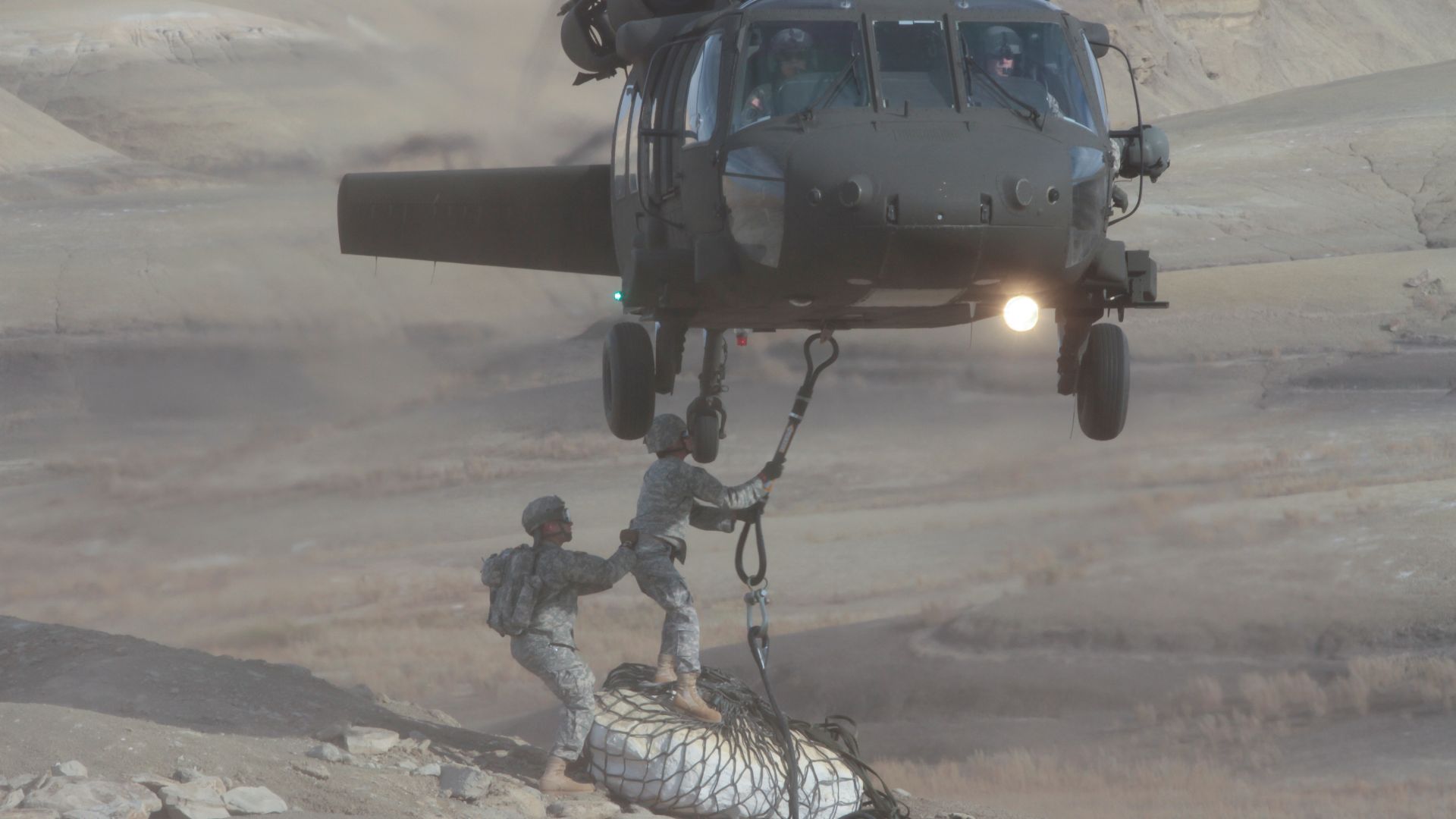 Sgt. 1st Class Anna Doo, Wikimedia Commons
Sgt. 1st Class Anna Doo, Wikimedia Commons
Logging The Specimen Into A Database
Before lab work begins, each fossil receives a unique catalog number. This ID links to data about its exact find location and the surrounding sediment. Systems like Specify and MorphoBank let researchers track specimens across institutions and time to ensure no detail is lost or duplicated.
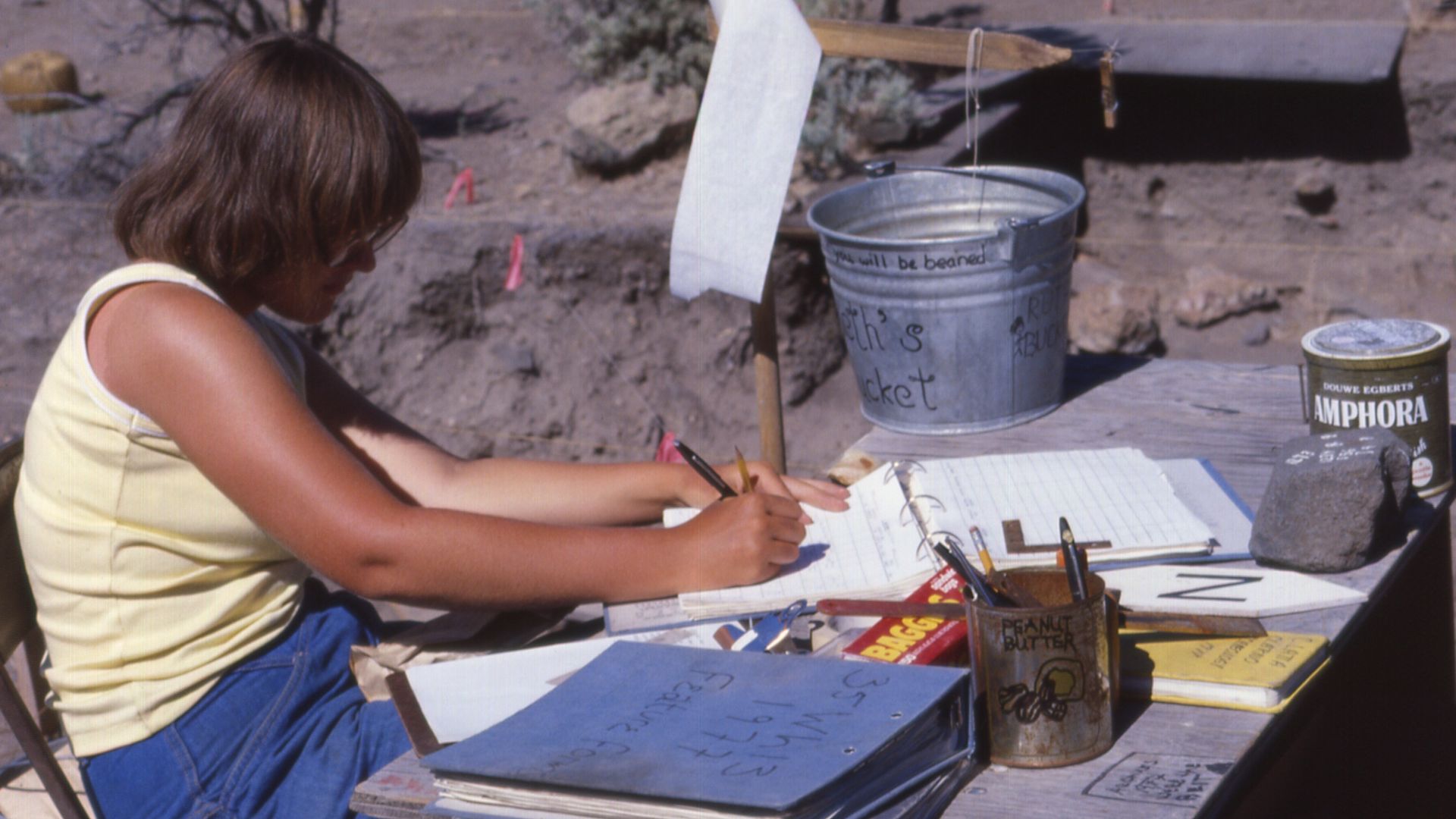 John Atherton, Wikimedia Commons
John Atherton, Wikimedia Commons
Opening The Jacket In A Prep Lab
In the lab, the plaster jacket is scored and peeled back. Lab technicians remove excess matrices using air scribes and micro sandblasters. Under microscopes, fine details like blood vessel canals or bone sutures emerge—features too subtle to detect in field conditions.
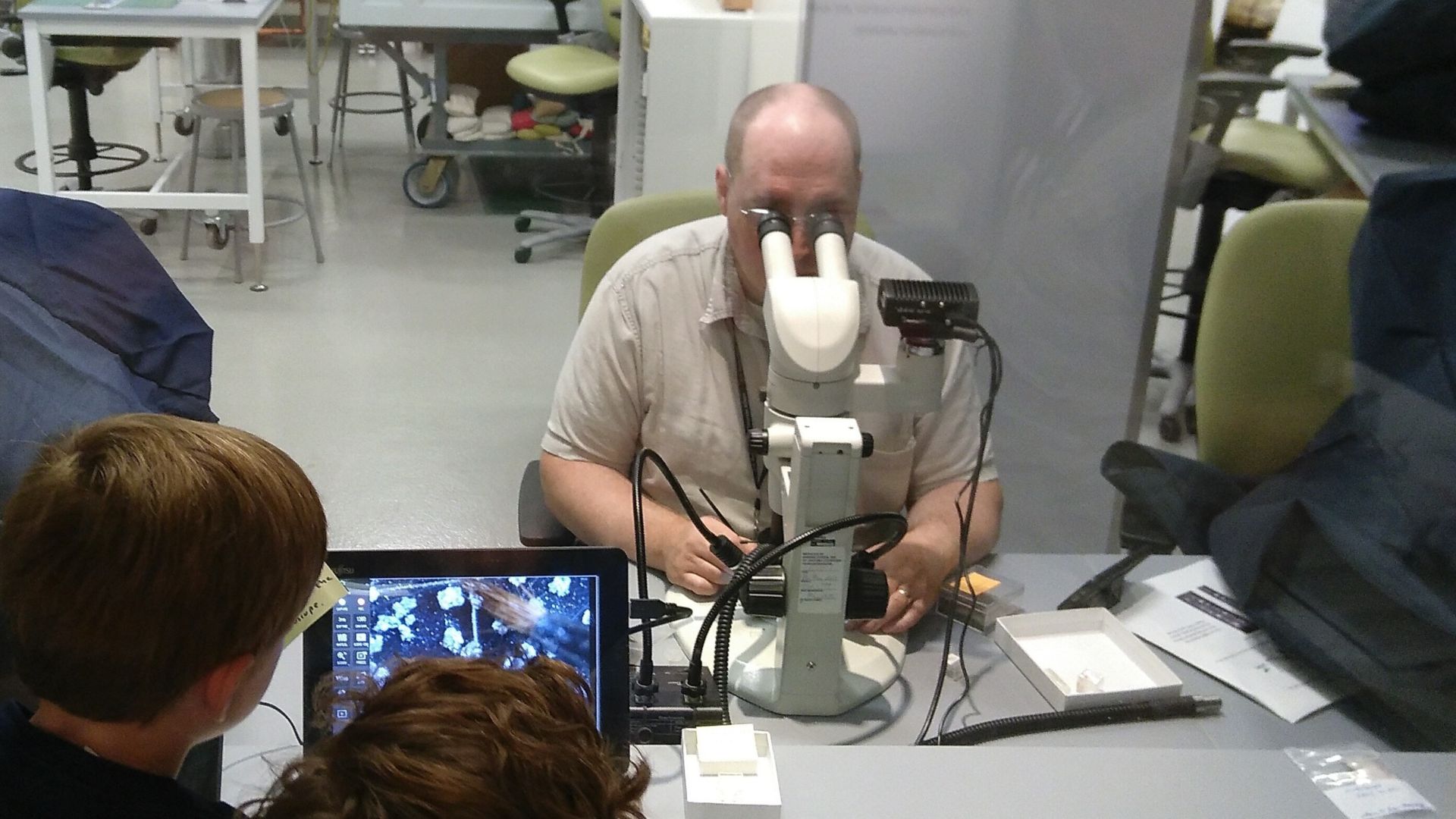 Daniel Mietchen, Wikimedia Commons
Daniel Mietchen, Wikimedia Commons
CT Scanning For Internal Insights
Plus, CT scanners penetrate solid rock to reveal what can't be seen by hand. Internal features like root canals or growth rings emerge in sharp detail, and for fragile fossils, this method avoids physical exposure. Researchers can then build 3D models without risking any damage to the original.
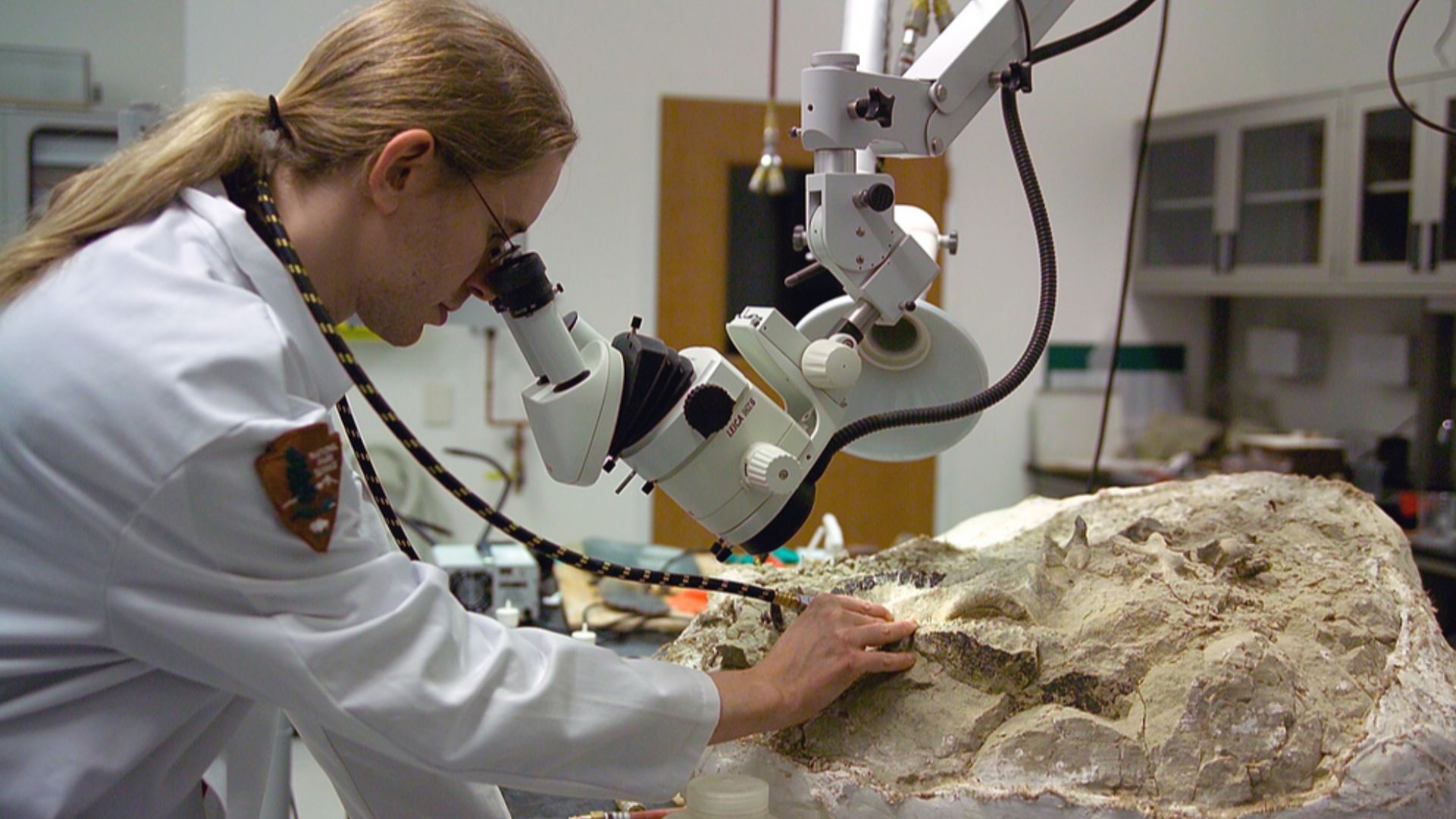 John Day Fossil Beds National Monument staff (National Park Service), Wikimedia Commons
John Day Fossil Beds National Monument staff (National Park Service), Wikimedia Commons
Reconstructing Skeletons With Reference Models
To ensure scientific accuracy, paleontologists use software such as Avizo or Blender to align bones accurately. They compare each fossil with closely related species, then digitally infer missing parts. These models produce reconstructions that reflect true anatomy, not stylized mounts built on artistic speculation.
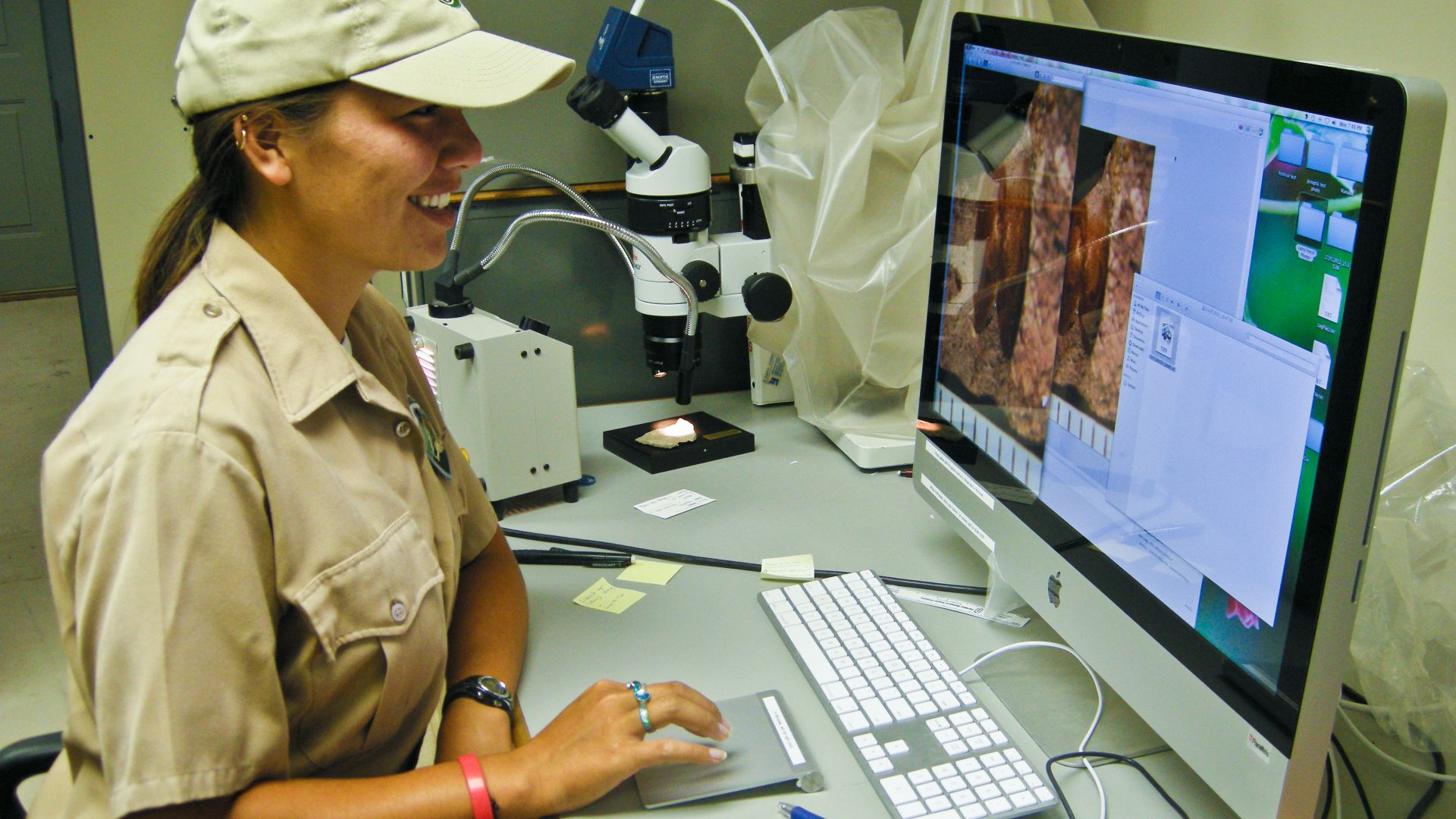 NPS Natural Resources, Wikimedia Commons
NPS Natural Resources, Wikimedia Commons
Dating The Surrounding Layers
Scientists date fossils by analyzing volcanic ash layers above and below them. Using uranium-lead or argon-argon dating, they determine when the ash solidified. This helps narrow the fossil’s age, typically within hundreds of thousands of years, which is remarkably precise for something over 100 million years old.
Peer Review And Species Naming
New species aren't declared on a whim. Paleontologists submit detailed anatomical descriptions to peer-reviewed journals. Every claim must follow the International Code of Zoological Nomenclature. The name only becomes valid once the scientific community agrees that the fossil is distinct from any previously recorded genus or species.
Housing In Controlled Museum Storage
After study, most fossils are placed in museum storage, not on display. They're stored in acid-free trays under constant humidity and temperature control. Foam padding and vibration-proof cabinets help preserve fragile bones and eggs for future generations and continued access to research.
Displaying For Public Education
Surprise, surprise! Visitors rarely see original fossils. Museums showcase detailed casts built from 3D scans or molds. These replicas reduce the risk to the actual specimen. Accurate mounting and digital reconstructions help connect the fossil to its ancient environment, which makes the science visible to everyone.
Revisiting Old Finds With New Tech
Nowadays, old fossils are being studied with powerful new tools. Scientists can scan them to see inside or even detect chemical traces left behind. Bones once thought ordinary are now revealing how dinosaurs grew and sometimes what colors they might have had.


